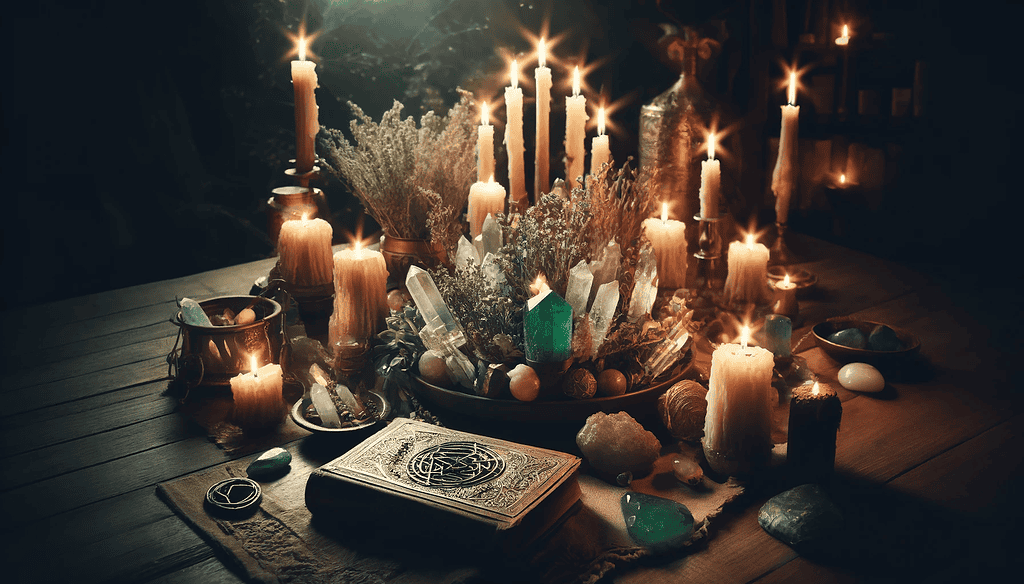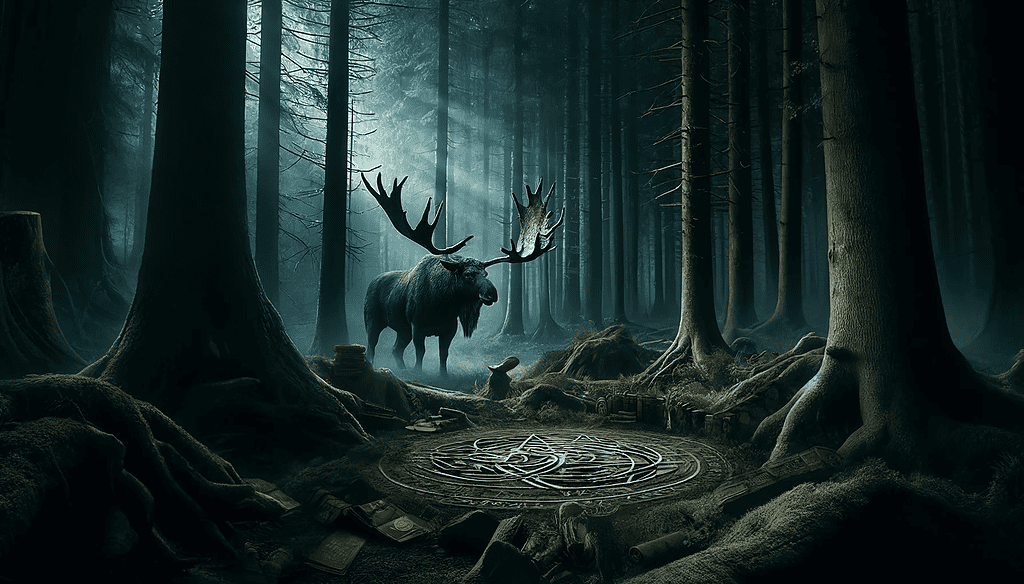Welcome to an exploration of the best books about paganism, where we delve into both the rich historical tapestry of paganism.
Have you ever wondered how closely modern pagan practices align with the beliefs of our ancestors?
This list of the best pagan books prioritizes historical accuracy and depth, focusing on paganism books that illuminate the actual practices, beliefs, and rituals of our ancestors. Understanding these authentic traditions offers us a unique window into their worldviews and spiritual lives, allowing us to connect more deeply and meaningfully with our roots to live a pagan way of life.
As we venture through the annals of pagan history, let us embrace the opportunity to understand where we come from so that we may better decide where we wish to go.

Table of Contents
Now here is a list of the 10 best books on Paganism:
“The Golden Bough” by James Frazer

European Traditions Unveiled
“The Golden Bough” by Sir James George Frazer is an essential read for those intrigued by the survival and evolution of European traditions through tumultuous historical periods. This classic work takes a scientific approach, meticulously detailing the continuity of rites, myths, and customs from the Roman Empire to the 19th century. Frazer’s comprehensive study not only covers well-documented traditions but also illuminates lesser-known rural customs that persisted through the Middle Ages and beyond, providing a thorough understanding of Europe’s cultural heritage.
“The Viking Way” by Neil Price

Delving into Norse Spirituality and Mythology
In “The Viking Way,” Neil Price, an esteemed English archaeologist specializing in the Viking Age, examines the religious, spiritual, and mythical components of Old Norse culture. His work is characterized by a deep scientific rigor yet presented in a manner that is accessible and engaging. Price explores how these ancient beliefs and practices influenced nearly every aspect of Norse life, from daily chores to broader worldviews, making this book a treasure trove of insights into a complex society whose beliefs were intertwined with their environment and everyday existence.
“Ecstasies” by Carlo Ginzburg

Historical Realities of Witchcraft Across Europe
Carlo Ginzburg’s “Ecstasies” offers a profound exploration into the widespread practices of Witchcraft throughout Europe, tracing themes and myths that echoed across the continent. Ginzburg uses a vast array of primary sources to craft a narrative that showcases how deeply ingrained these practices were in rural communities. His analysis points to a shared cultural undercurrent that spanned across borders, revealing a complex network of beliefs that persisted despite significant opposition from church authorities during the medieval period.
“Between the Living and the Dead” by Eva Pocs

Uncovering Shamanistic Elements in Hungarian Witchcraft
Eva Pocs provides a detailed analysis of Hungarian Witchcraft in “Between the Living and the Dead,” highlighting its unique characteristics and shamanistic elements. She explores how these practices were deeply rooted in the rural, agricultural communities of Hungary, examining their significance in the daily lives and spiritual practices of the people. Pocs’ research extends into the broader context of European Witchcraft, making connections with German-speaking regions and demonstrating how these mystical traditions were integral to cultural identity and heritage.
“The Lost Beliefs of Northern Europe” by Hilda Ellis Davidson

Pre-Christian Cosmologies and Their Impact
Hilda Ellis Davidson’s “The Lost Beliefs of Northern Europe” is an expansive work that dives into the cosmologies and daily life of pre-Christian northern Europe. Davidson meticulously gathers evidence from archaeology, linguistics, and comparative mythology to paint a vivid picture of how ancient beliefs shaped everything from the agricultural calendar to societal norms. This book is an invaluable resource for understanding how deeply pagan beliefs were woven into the fabric of daily life, influencing everything from seasonal festivals to life milestones like birth and death.
“Myths and Symbols in Pagan Europe” by H.R.E. Davidson

Connections Among Mythologies Explored
H.R.E. Davidson’s “Myths and Symbols in Pagan Europe” thoroughly investigates the structural similarities and shared themes between Celtic and Germanic mythologies. Davidson’s scholarly work is precise and well-documented, appealing to those who seek a factual and detailed understanding of how ancient societies perceived and interacted with the divine. The book discusses the organization of pagan belief systems and their profound impact on societal structures, contrasting these with the organized religions that followed.
“Myth and Mentality” by Anna Leena Siikala

Exploring Finno-Ugric Spiritual Legacy
Anna Leena Siikala’s “Myth and Mentality” offers a comprehensive look at how ancient Finno-Ugric cosmologies were transmitted through cultural expressions such as songs and myths. Siikala’s exploration extends to how these cosmologies shaped the mentalities and worldviews of the people, emphasizing the role of animism and shamanistic rituals in their relationship with nature. This work not only deepens the understanding of pre-Christian spiritual practices but also illustrates their complexity and the sophisticated nature of these ancient societies.
“Witchcraft Mythologies and Persecutions” by Eva Pocs and Gabor Klaniczay

Insights into the Transformation of European Witchcraft
Eva Pocs and Gabor Klaniczay delve into the transformation of pagan myths and rituals during the Christianization of Europe in “Witchcraft Mythologies and Persecutions.” Building on Carlo Ginzburg’s foundational research, they explore how these ancient practices were often rewritten or suppressed, examining the cultural and historical implications of these changes. Their work provides a nuanced view of the enduring nature of these traditions and the challenges they faced during the medieval witchcraft persecutions.
“The Handbook of Religions in Ancient Europe” by Lisbeth Christensen

A Comprehensive Exploration of European Paganism
“The Handbook of Religions in Ancient Europe” by Lisbeth Christensen offers a thorough examination of the diverse and complex nature of European Paganism. Christensen’s research spans a broad temporal and geographical scope, shedding light on the interconnectedness of myths, rites, and cosmologies across different European cultures. This book is crucial for anyone interested in the deep historical roots of European paganism, from its prehistoric origins through its evolution in the face of changing cultural landscapes.
“Shamanism: Archaic Techniques of Ecstasy” by Mircea Eliade

Foundations and Global Perspectives of Shamanism
Mircea Eliade’s “Shamanism: Archaic Techniques of Ecstasy” is an authoritative exploration of shamanistic practices around the world, with a particular focus on the Eurasian origins of shamanism. Eliade discusses the central role of animism and altered states of consciousness in shamanistic traditions, providing insights into their cultural significance and the psychological mechanisms at play. This book is essential for understanding the foundational aspects of shamanism and its profound impact on various religious practices globally.
Final Thoughts
Our goal is not to claim superiority of one perspective over another but to enrich our understanding and appreciation of pagan traditions in all their forms. In this journey, we stress the importance of distinguishing between well-documented historical facts and modern interpretations that often reflect what we wish history to be rather than what it actually was.
Our focus is on truth and authenticity, seeking to understand the genuine beliefs and practices as they were, without the coloration of contemporary desires or biases.
This approach is not about discrediting the validity of modern spiritual movements but rather emphasizing the need for a grounded understanding of history as the foundation of any truly informed spiritual practice.
By engaging critically with these books on Paganism, we are not merely learning about paganism; we are immersing ourselves in a complex and nuanced past. This approach empowers us to form our own judgments and interpretations of spirituality. It encourages us to use critical thinking to discover our connections to these ancient practices, ensuring that our spiritual journey is both personal and informed.
It’s crucial to emphasize the importance of discovering the truth for ourselves in our spiritual journey. Rather than accepting modern interpretations that often recast ancient beliefs to fit contemporary narratives, we aim to explore the historical depths of paganism.
This honest approach allows us to build a spirituality that is truly our own, not one prescribed by others who may present their interpretations as fact. By learning as much as we can about the actual beliefs and practices of our ancestors, we ensure that our spiritual paths are authentically connected to our heritage, free from the distortions of modern biases. This process of learning and discovery is what makes our connection to paganism not only educational but also deeply personal and spiritually fulfilling.
As we conclude our exploration of the best pagan books, it’s essential to recognize the importance of basing our spiritual practices on historical truths rather than modern reinterpretations.

While we have focused on texts that provide a factual basis for understanding pagan traditions, this does not mean we seek to discredit New Age interpretations of these ancient beliefs. Instead, our aim is to highlight the richness and depth of historical paganism, enabling each of us to forge a connection that is both informed and profound.
Understanding the actual practices and beliefs of our ancestors allows us to appreciate the origins of these traditions fully. It helps us create a spirituality that resonates personally and deeply, grounded in the real rather than adapted to fit contemporary molds. However, we acknowledge and respect that spirituality is a deeply personal journey, and everyone is free to explore and embrace the path that best suits their beliefs and needs.
In fostering a direct connection with the historical aspects of paganism, we empower ourselves to choose how and what to believe. By delving into the roots of these ancient practices, we gain the knowledge and context needed to make informed decisions about our spiritual paths. This approach ensures that our spiritual beliefs are a true reflection of our individuality and a genuine homage to the past, rather than a mere adoption of popularized versions.
Let us carry forward the spirit of discovery and respect for diversity in beliefs as we continue on our respective spiritual journeys. Whether you find resonance in historical authenticity or modern interpretations, the most important thing is that your path fulfills and enriches your life and connection to the spiritual world.
